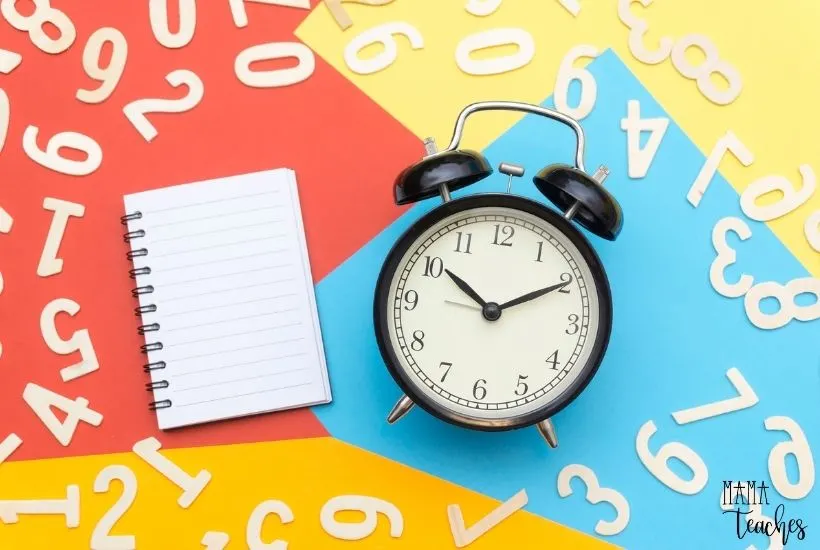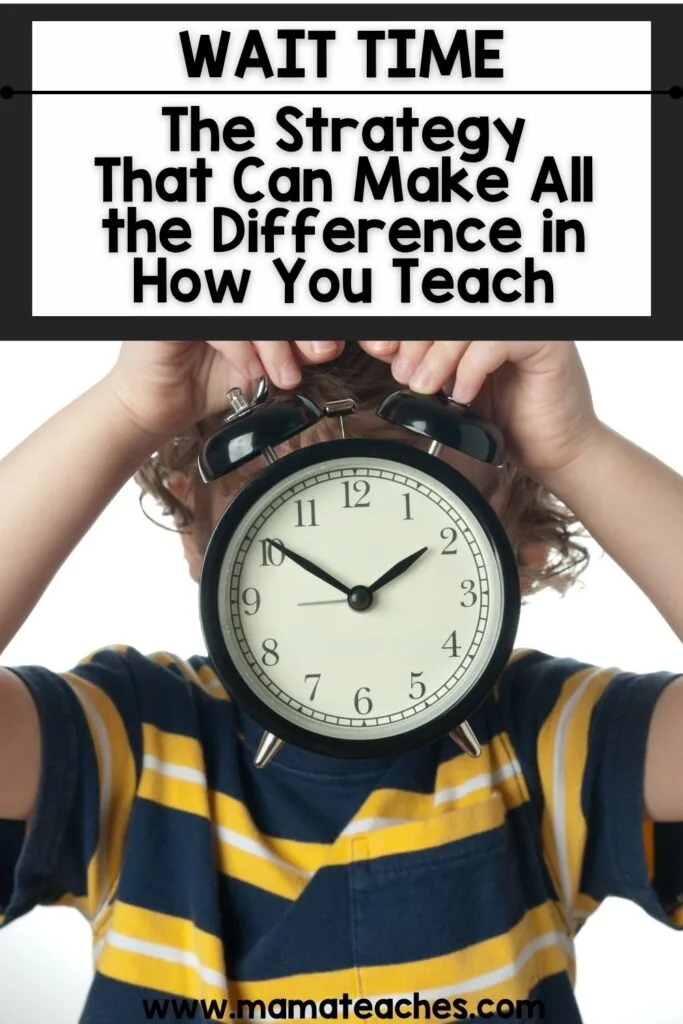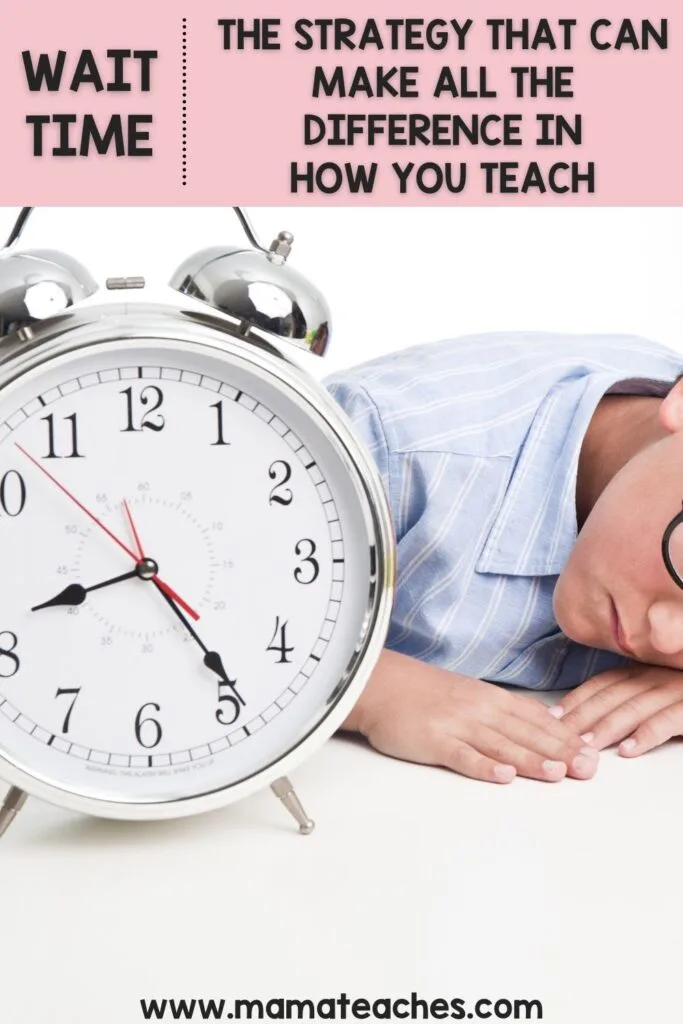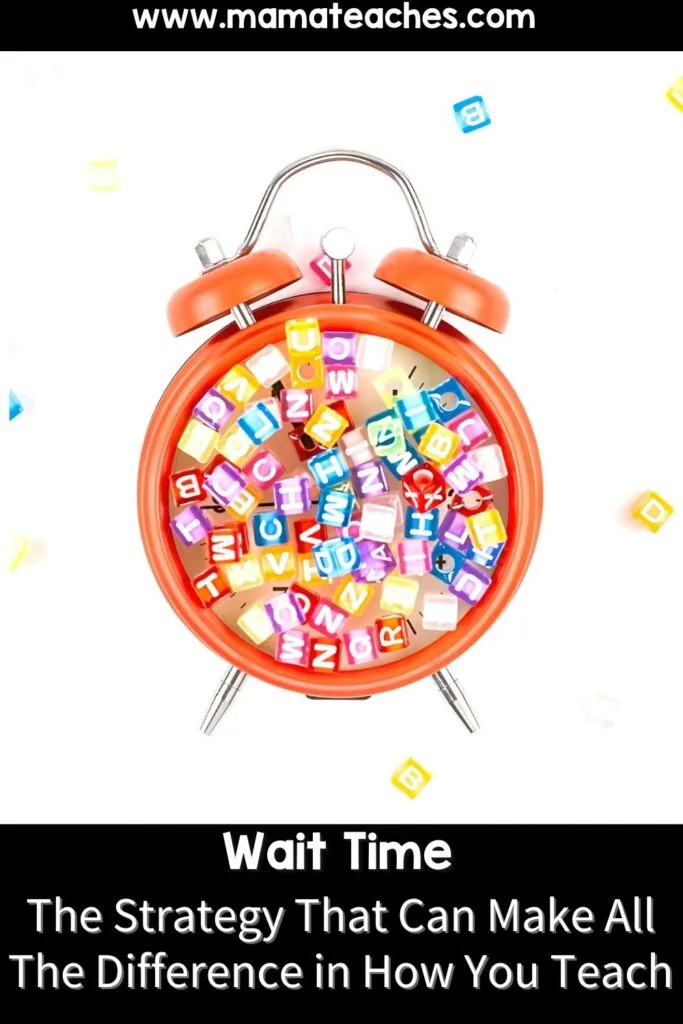Discover how one small change can increase the engagement, understanding, and motivation of your students.
Just wait for it.

This article contains affiliate links to things that you might like.
Wait Time Strategy
We live in a world where people hate to wait.
We hate lines, we hate buffering, and we hate waiting in traffic.
Can anything good come from waiting?
When it comes to teaching, the answer is yes.
What Is Wait Time?
Wait time involves asking a question, and then pausing before you ask for the answer.
For example, you could say to a student, “I want you to think of five famous presidents and what makes them famous.” Then you wait.
You don’t ask for the answer right away (and you don’t stare him down either!).
You erase the whiteboard, or you stroll to the other side of the room.
You could even write the numbers 1-5 on the board or a piece of paper.
What are you doing?
You are waiting.
You are giving the student wait time.
Once some time has gone by, you then ask for an answer.
Why Is Wait Time Important?
Everyone processes language at different rates.
Two students can have the same knowledge stored in their brains (let’s say, five famous presidents), but they process the question you ask at different rates.
One student processes as you speak, and is ready to give an answer immediately.
Another student must hear the whole question before beginning to process it.
Only then can she call to mind an answer.
By implementing a little wait time after you ask a question, you level the playing field so both students can participate.

What Happens When You Increase Wait Time?
When we ask rapid-fire questions, we only engage the quick-to-process students.
That leaves the other students unengaged.
Pretty soon those students will adopt the attitude of “Why bother?” and stop trying to follow what you say.
We may try to get around this by calling on individual students who do not raise their hands and directing a question solely to them.
They may respond to our quick questions with, “I don’t know,” and we assume they are not paying attention.
This may not be the case.
They simply may not be ready to give an answer.
This is a teacher problem – NOT a student problem!
By increasing your wait time, students are more likely not only to pay attention but also to participate.
Even in a one-on-one setting with a child and teaching parent, we can move at a pace that the child can’t follow.
We may get frustrated or irritated by what we perceive to be disengagement or inattentiveness on the part of the child (“Aren’t you listening?” or “Come on! You know this!”).
Our frustration produces anxiety or shame in the child, which only serves to shut him down.
When you increase the wait time, you increase the likelihood that your child will answer correctly or thoughtfully, and this motivates the child to keep paying attention and thinking of responses.

Wait Time for All Students
Perhaps you are thinking, “My kids are all quick-to-process, so I don’t need to add wait time to my teaching style.” It may be that adding wait time will not add to the number of responses, but it may add to the quality of responses.
If you are asking a student to do higher-level thinking, he needs time to do that well.
Wait time is especially helpful for kids with learning disabilities.
These children are just as bright as any other, but they strongly benefit from adding a little wait time between your question and the answer.
If pausing for a few seconds between your question and the answer could help level the playing field in your class, engage more students, invite more participation, and increase the quality of responses, why wouldn’t you wait?
If you need further convincing that wait time can make a difference, watch this video of the F.A.T. City Workshop (F.A.T. stands for Frustration, Anxiety, and Tension).

The Strategy of Wait Time
So many teaching strategies ask you to do more, be more, or learn more.
Wait time isn’t like that. It is a pause–as simple as that.
But this simple step can make a world of difference.
